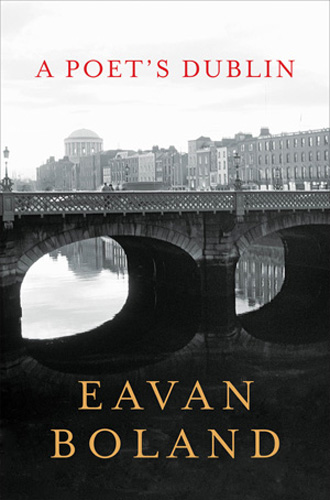A Poet’s Dublin
When I was a teenager my grandmother gave me an Irish Writer’s poster. Shaw. Synge. Swift. Behan. Yeats. Joyce. Beckett and O’Brien. It hung on the back on my bedroom door, right between The Republic of Ireland’s national soccer squad photo and the iconic red swim-suited Farah Fawcett. I was too young and isolated to know just how chauvinistic and linked to politics, often violently, the world of Irish letters and publishing was at the time. I had a vague idea about the struggle for political freedom, but was blind to gender issues that seem all too blazing now.
When I was a teenager my grandmother gave me an Irish Writer’s poster. Shaw. Synge. Swift. Behan. Yeats. Joyce. Beckett and O’Brien. It hung on the back on my bedroom door, right between The Republic of Ireland’s national soccer squad photo and the iconic red swim-suited Farah Fawcett. I was too young and isolated to know just how chauvinistic and linked to politics, often violently, the world of Irish letters and publishing was at the time. I had a vague idea about the struggle for political freedom, but was blind to gender issues that seem all too blazing now.
Obviously, Eavan Boland states this much clearer; she lived it:
I began to write in an Ireland where the word ‘woman’ and the word ‘poet’ seemed to be in some sort of magnetic opposition to each other. Ireland was a country with a compelling past, and the word ‘woman’ invoked all kinds of images of communality which were thought to be contrary to the life of anarchic individualism invoked by the word ‘poet’…I wanted to put the life I lived into the poem I wrote. And the life I lived was a woman’s life. And I couldn’t accept the possibility that the life of the woman would not, or could not, be named in the poetry of my own nation.
With the publication of Boland’s A Poet’s Dublin, more a selected greatest hits than a new collection, she is finally approaching a much deserved canonization. If Seamus Heaney and Bob Dylan can win Nobel Prizes, Boland should. Her poetry is direct and honest and enlightening.
This collection is peripatetic. Wander over years and neighborhoods, Boland’s verse—accompanied by her sleek black and white photographs of various buildings and monuments: a bridge, a door, a stairwell, a reflection—create a haunting sub-reality of Dublin city and suburban life. Boland claims in the introduction that, “a city gets its identity not just from its buildings, its industries, its history, its public events and its notable citizens. It also finds its identify from being imagined.” And Dublin, more than most, has been imagined in literature by the best.
The first section of the collection, “City of Shadows” builds the city with concrete images:
Small things
make the past.
Make the present seem out of place.A woman cracking and twisting.
Black atoms falling down
on green leaves.
Incantations on objects, light, moments, family, history, nostalgia all piece together an ethereal narrative. Boland reflects on a job at The Gresham Hotel when she was seventeen. Her father walks to the sea. Her mother appears in a singing kettle. A visit to the Huguenot Graveyard erupts in vowels. Her images create a collage that name and paint Dublin.
In the second section, “Gifts of the River,” Boland writes:
I begin with the Liffey because a river is not a place: it is a maker of places. Without the river there would be no city. Every day turning its narrow circle, endlessly absorbing and re-absorbing the shapes and reflections of the city, it mirrors what it created. With the river, the city every day has to throw itself into those surfaces, those depths, those reflections which have served as the source of all fictions.
The same could be said for her poetry which adds color and depth to the imagined psychology of Dublin as a living historical character. Once again, reflection, refraction, and time add mist-like elements to the daily. “Dawn on the river. / Dublin rises out of what reflects it.” Boland’s mother becomes synonymous with the ebb and flow of the sea and river. Seasons pass, wet and dry, time is constantly beyond reach.
“Under These Hills” titles the third section, which drifts into suburban life, rarely covered by other Irish poets. Boland uses folklore to dissect marriage. She captures the new and changing Dublin as it becomes a European hub. The themes of money and home trickle through and wrap the reader’s imagination to describe a new city.
The collection concludes with a transcribed conversation between Boland and Paula Meehan, also an accomplished poet, but from an inner-city Dublin background, the polar opposite of Boland’s global and international upbringing. They touch on personal stories, discuss literature, and grill each other on the origins of their poems and how they paint and construct Dublin, as an imagined city. The discussion of poems’ back stories are entertaining but unnecessary, as Boland’s work stands alone, as useful and strong as any bridge or tower or historical monument that add usefulness and beauty to Dublin.
It’s far past the time to add Eavan Boland to The Irish Writer’s poster. Better yet, design her own poster and hang it in every single shop and make A Poet’s Dublin mandatory reading for whoever passes through the imaginary city gates.





